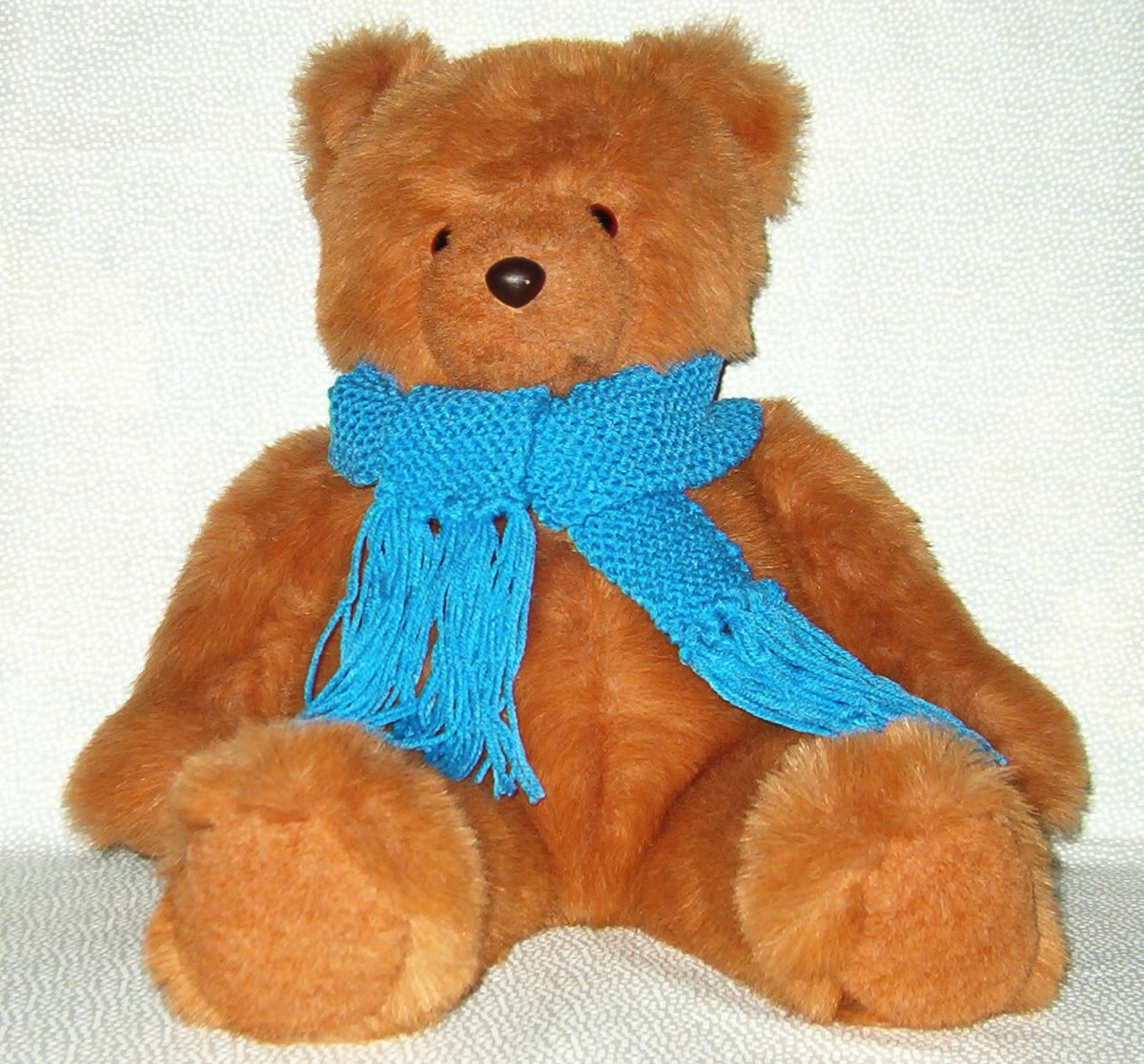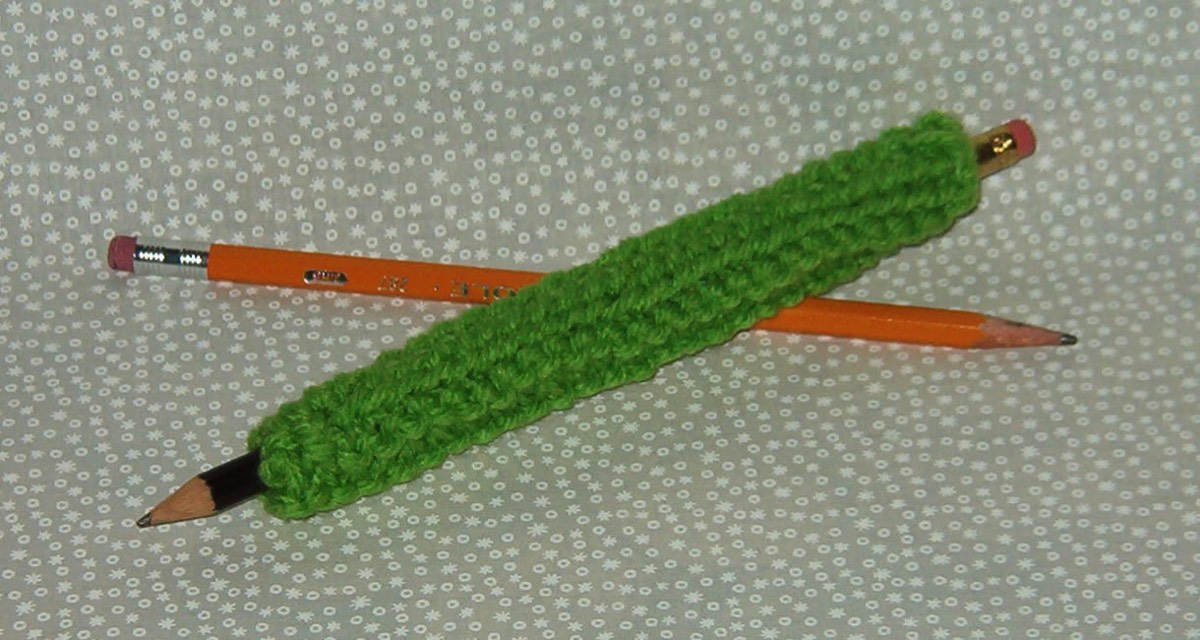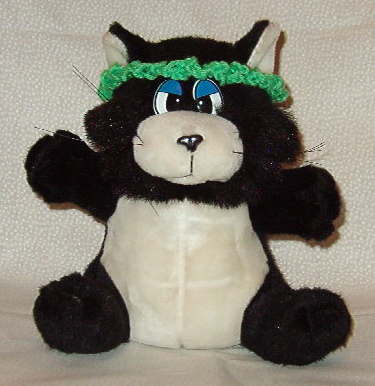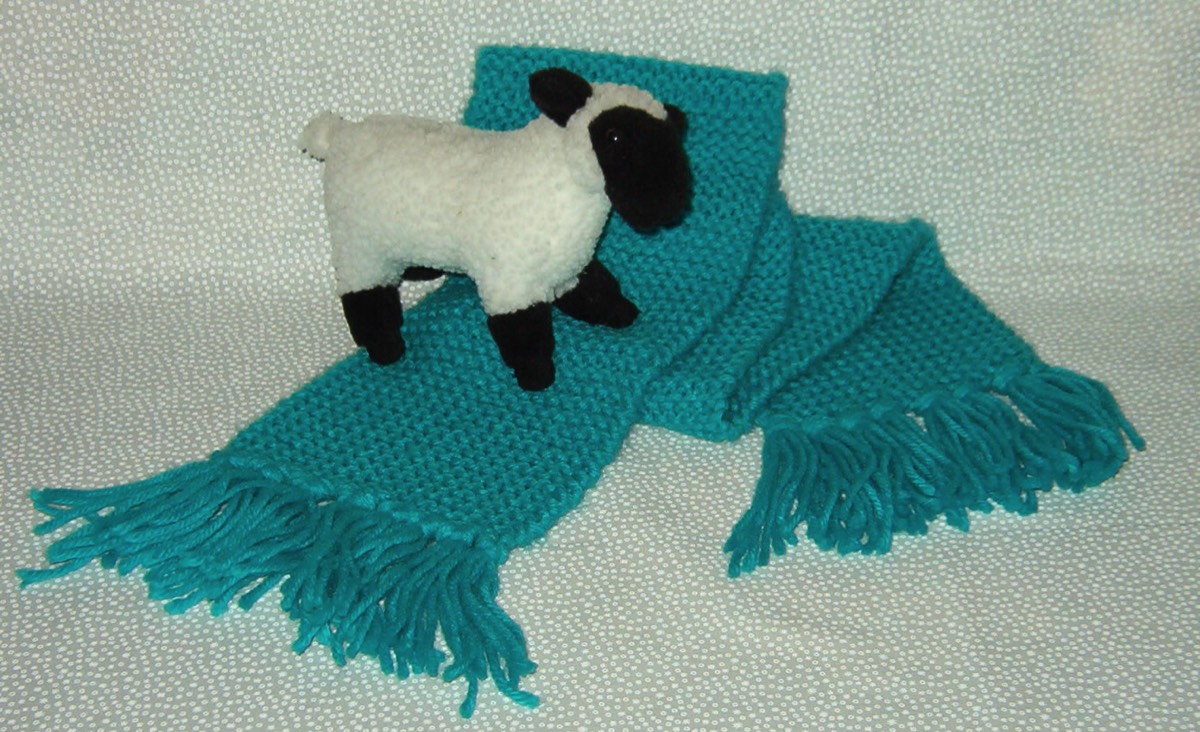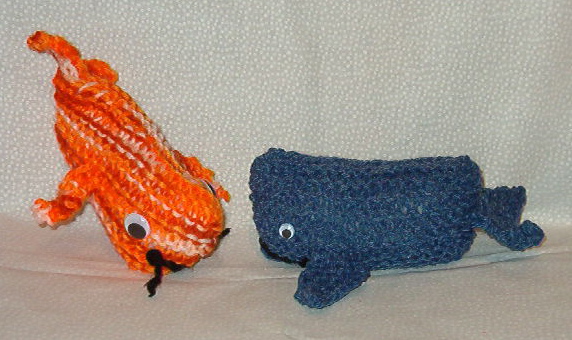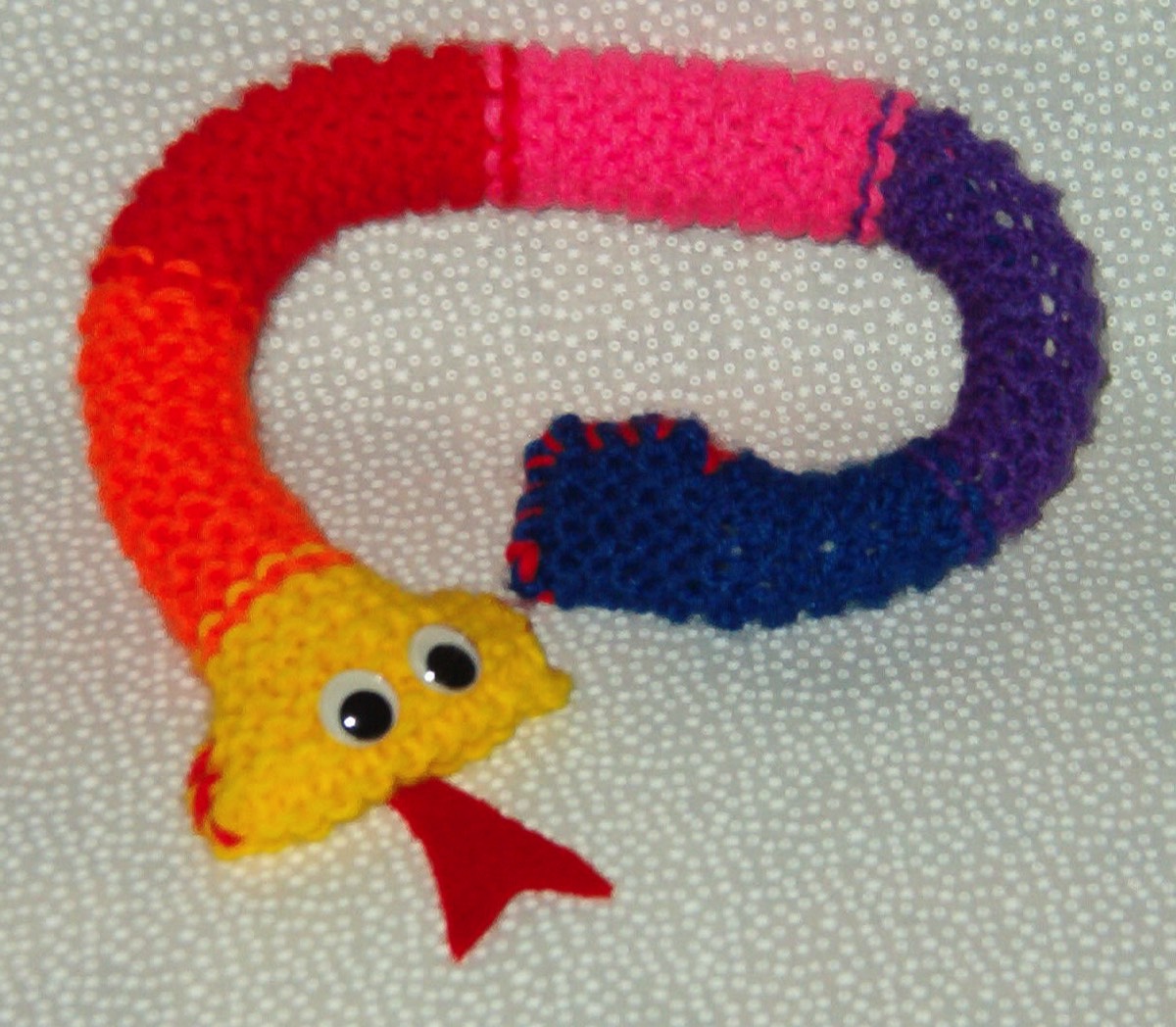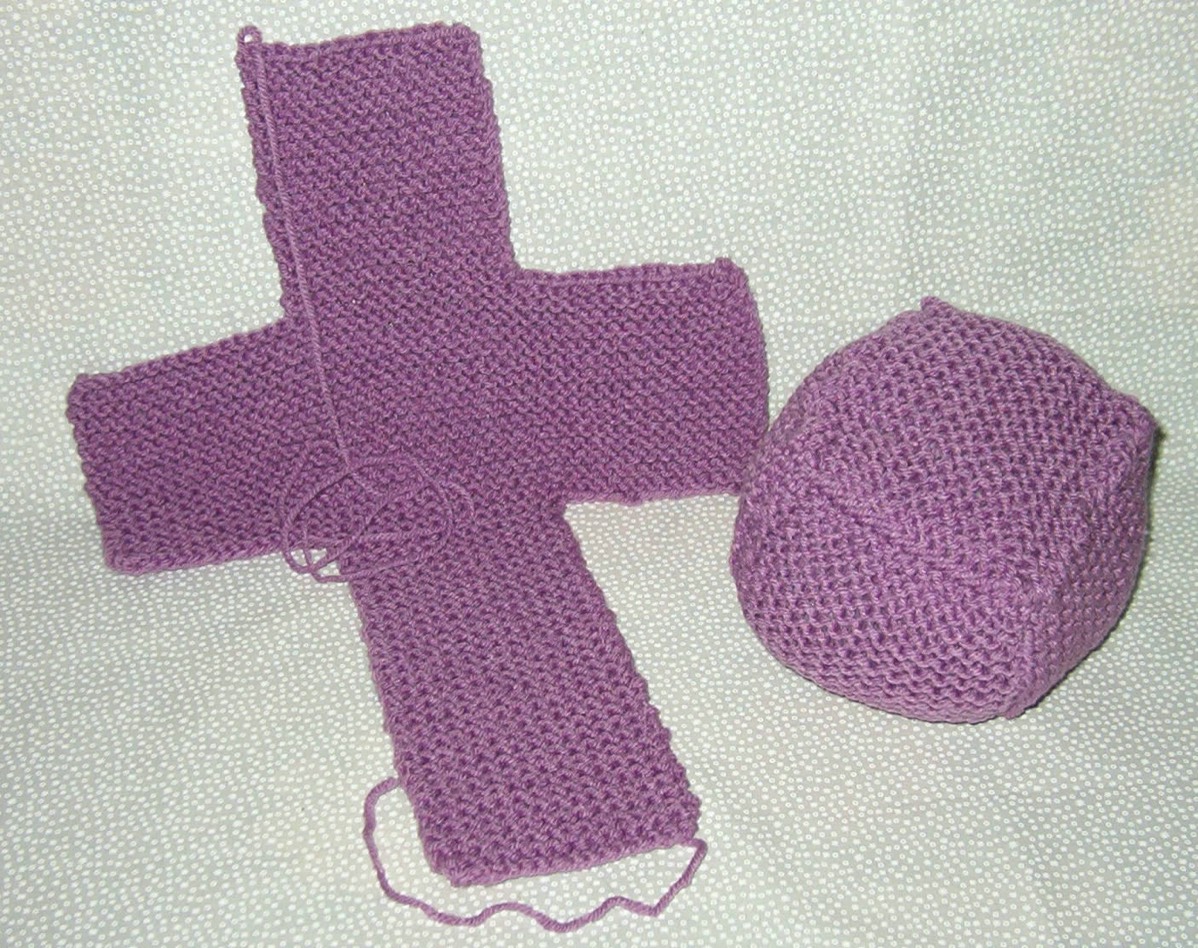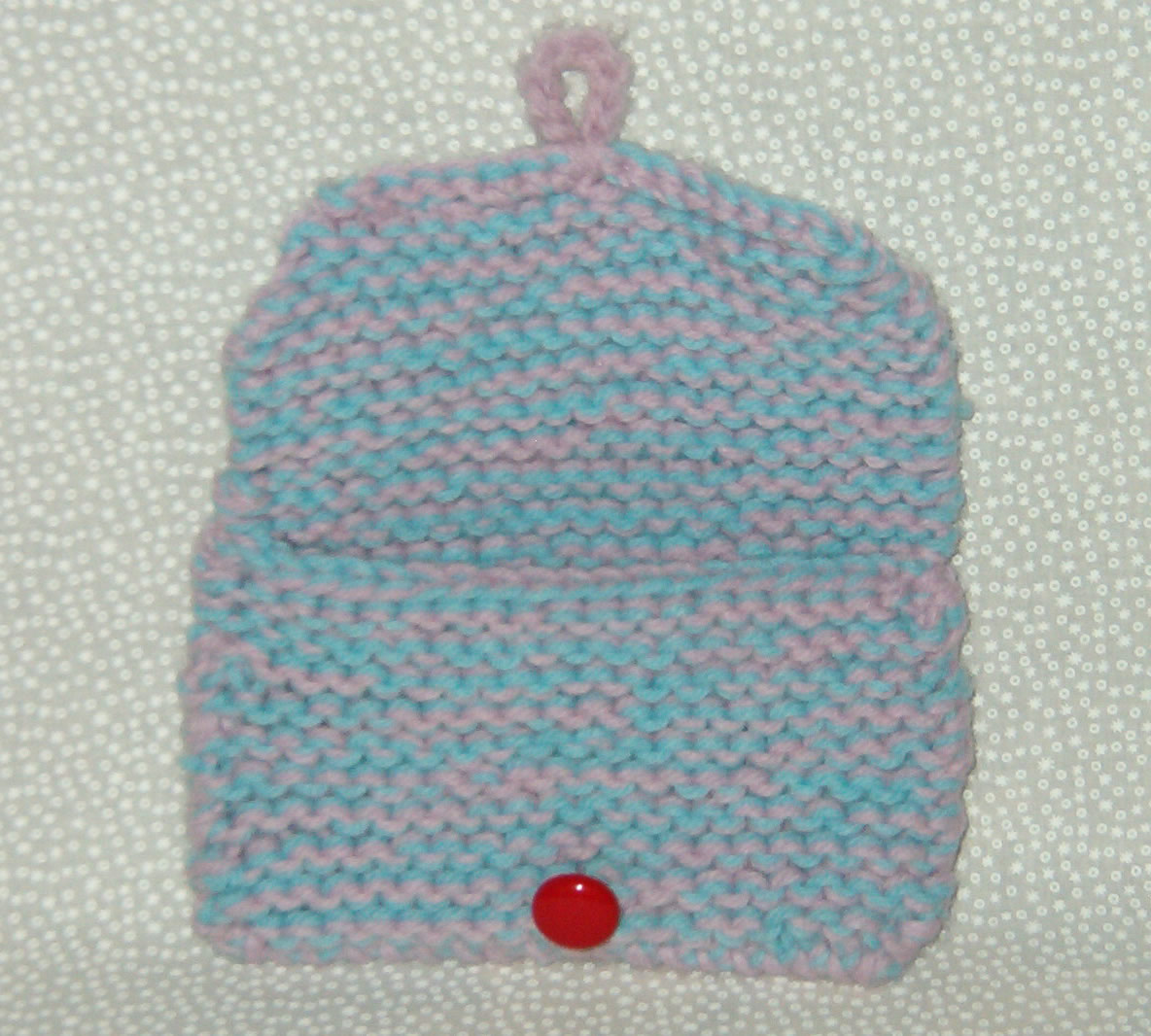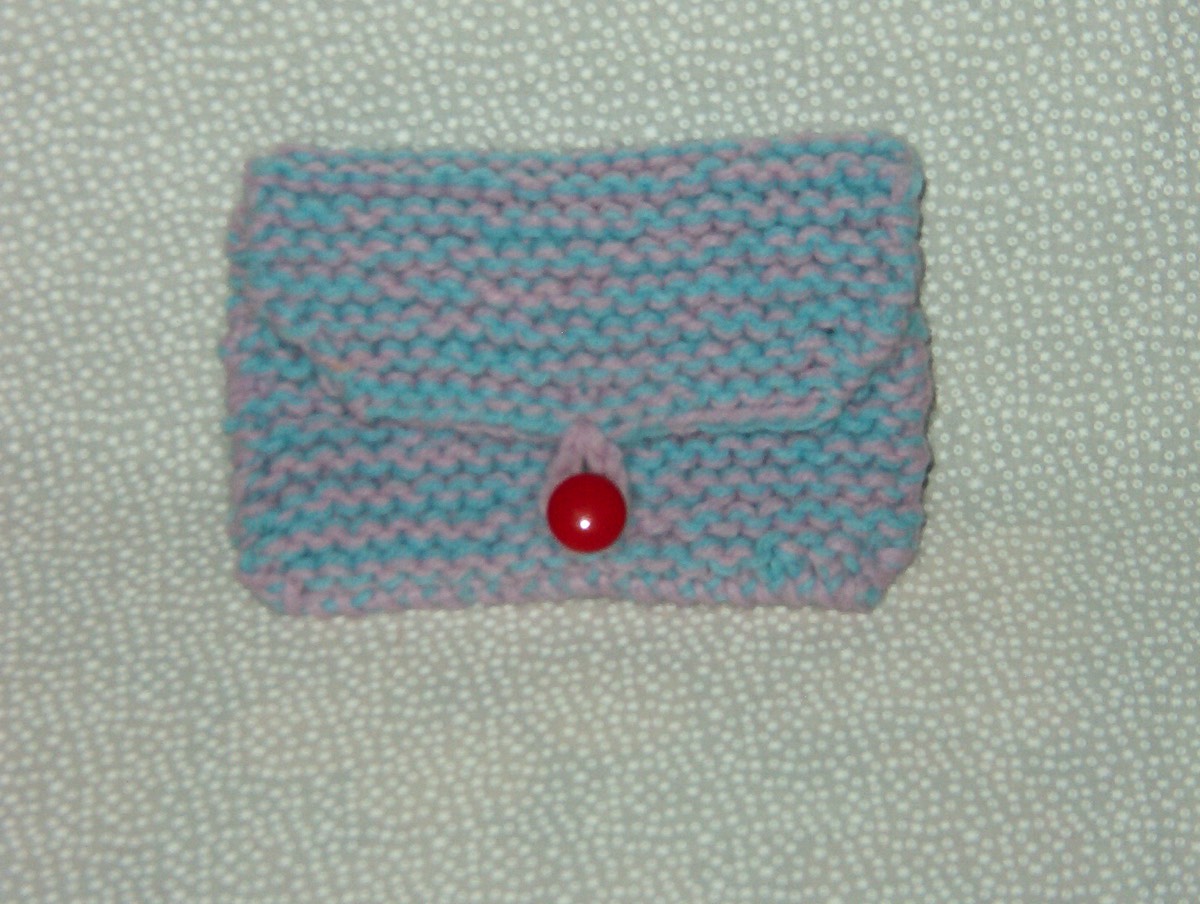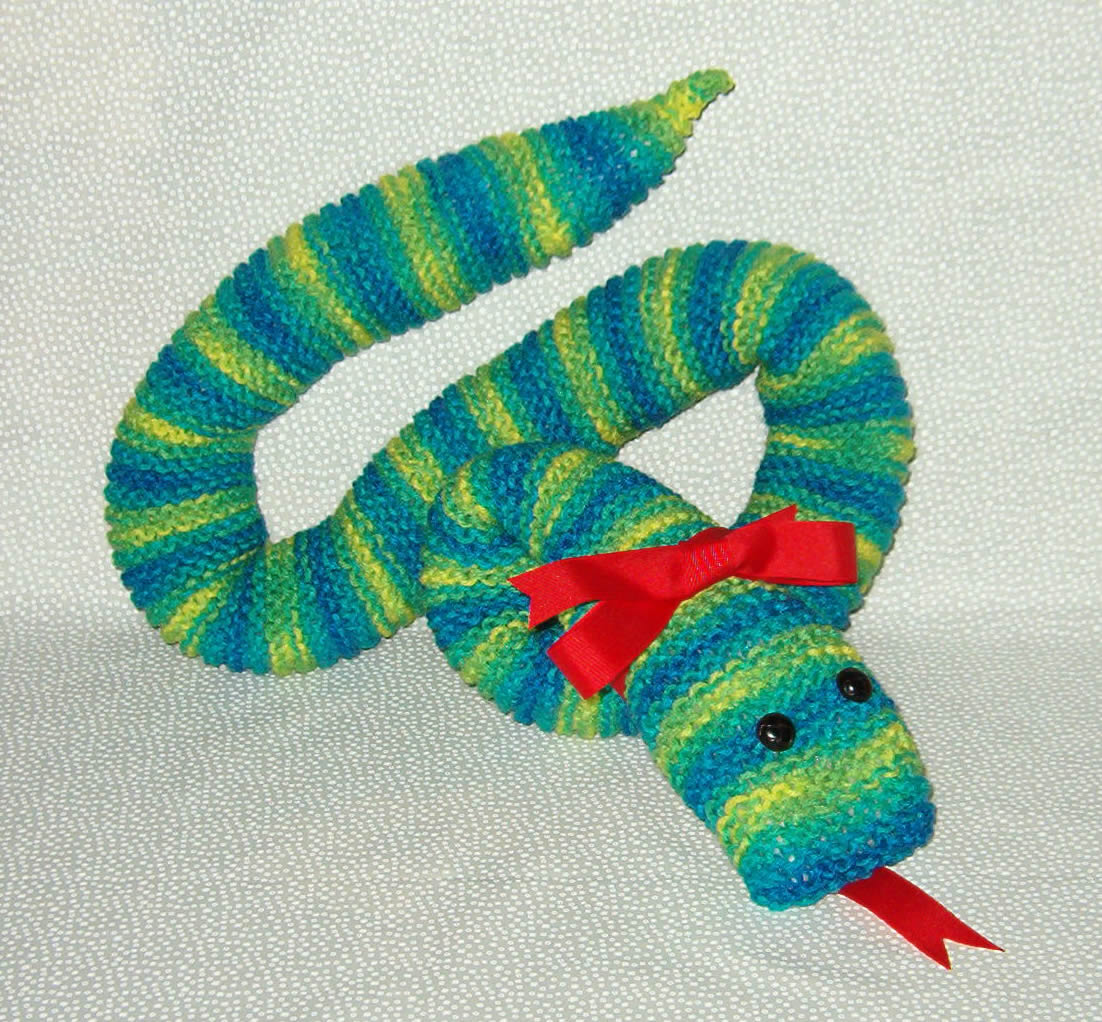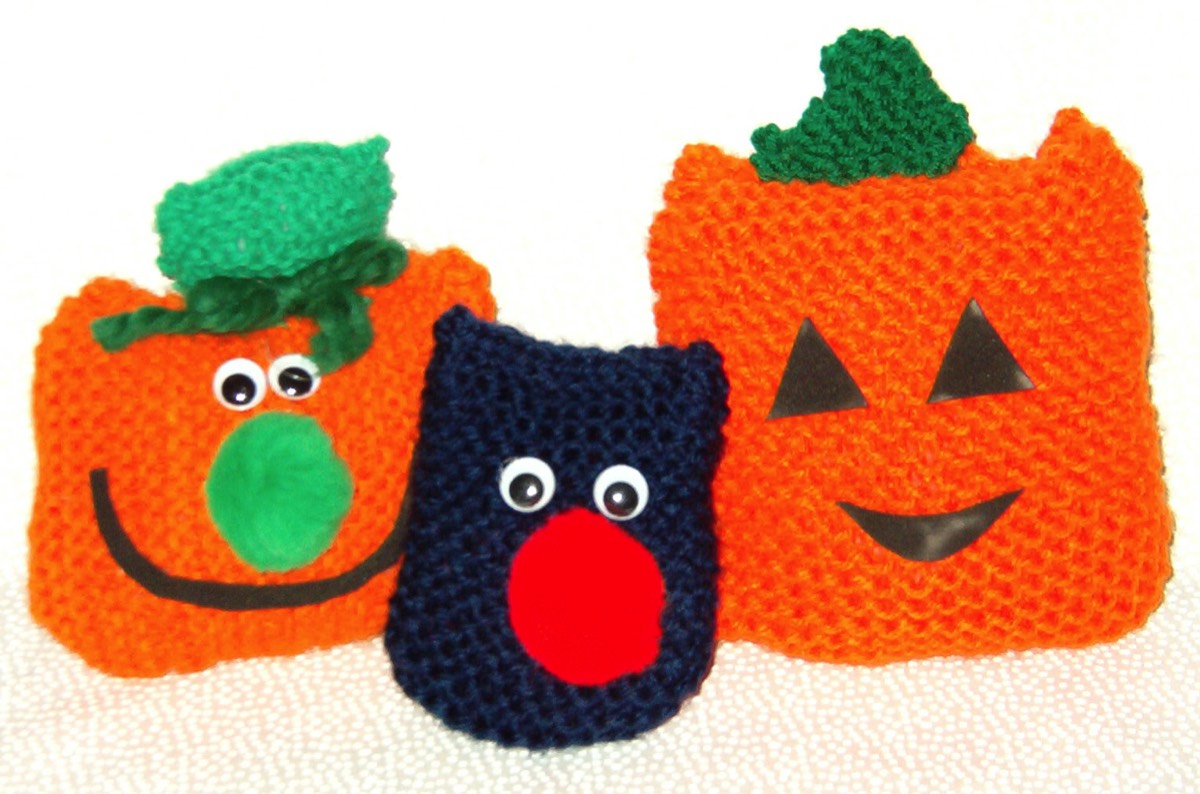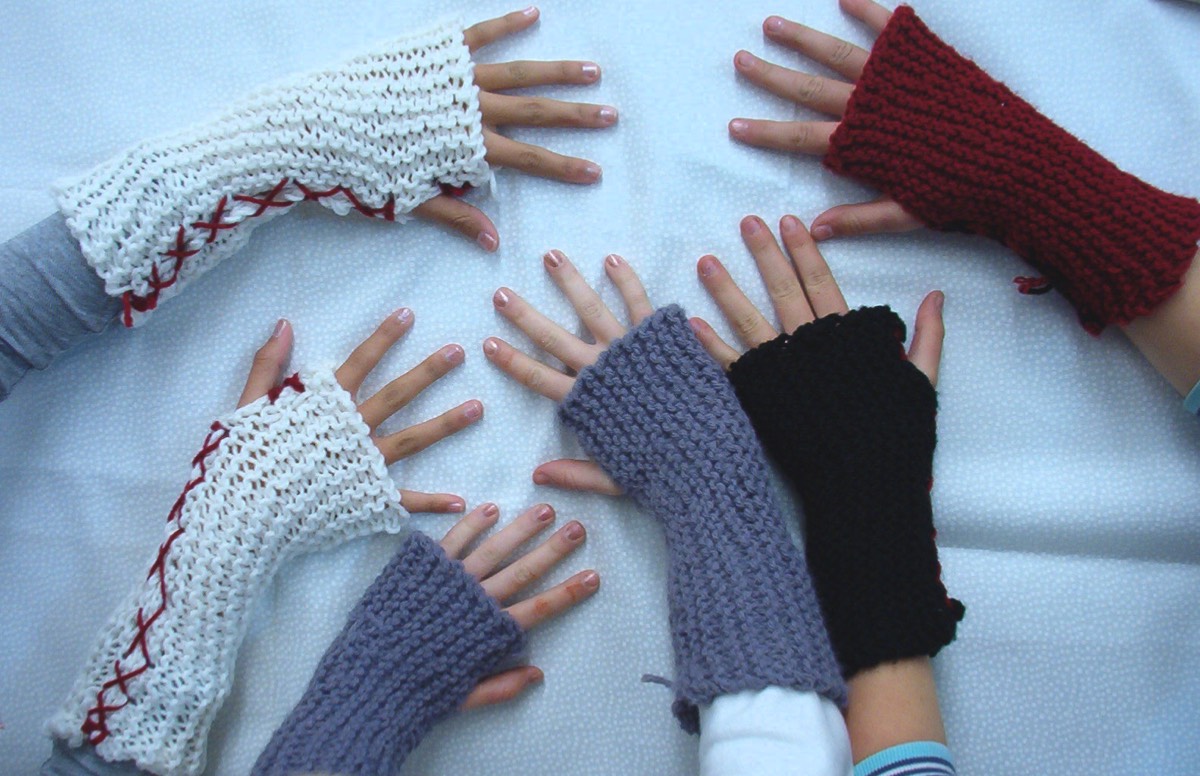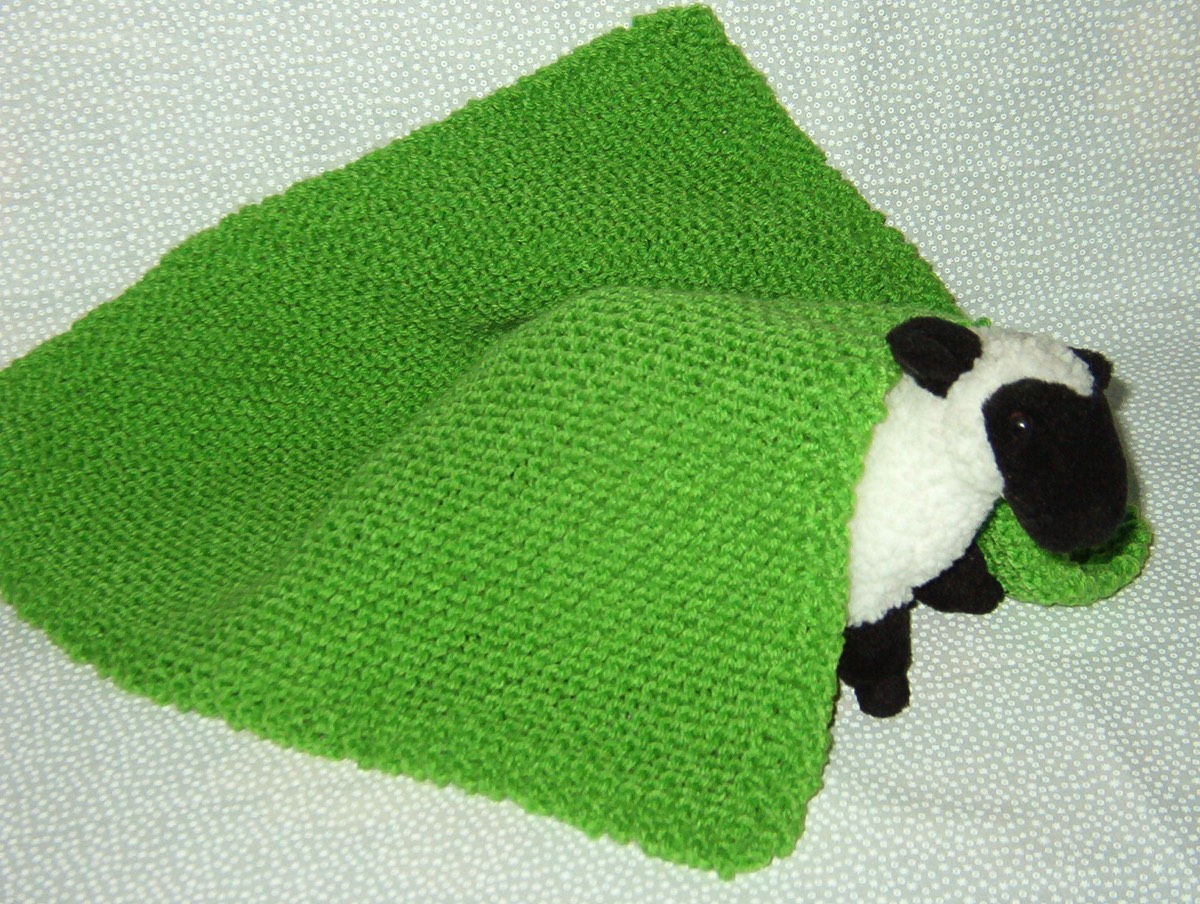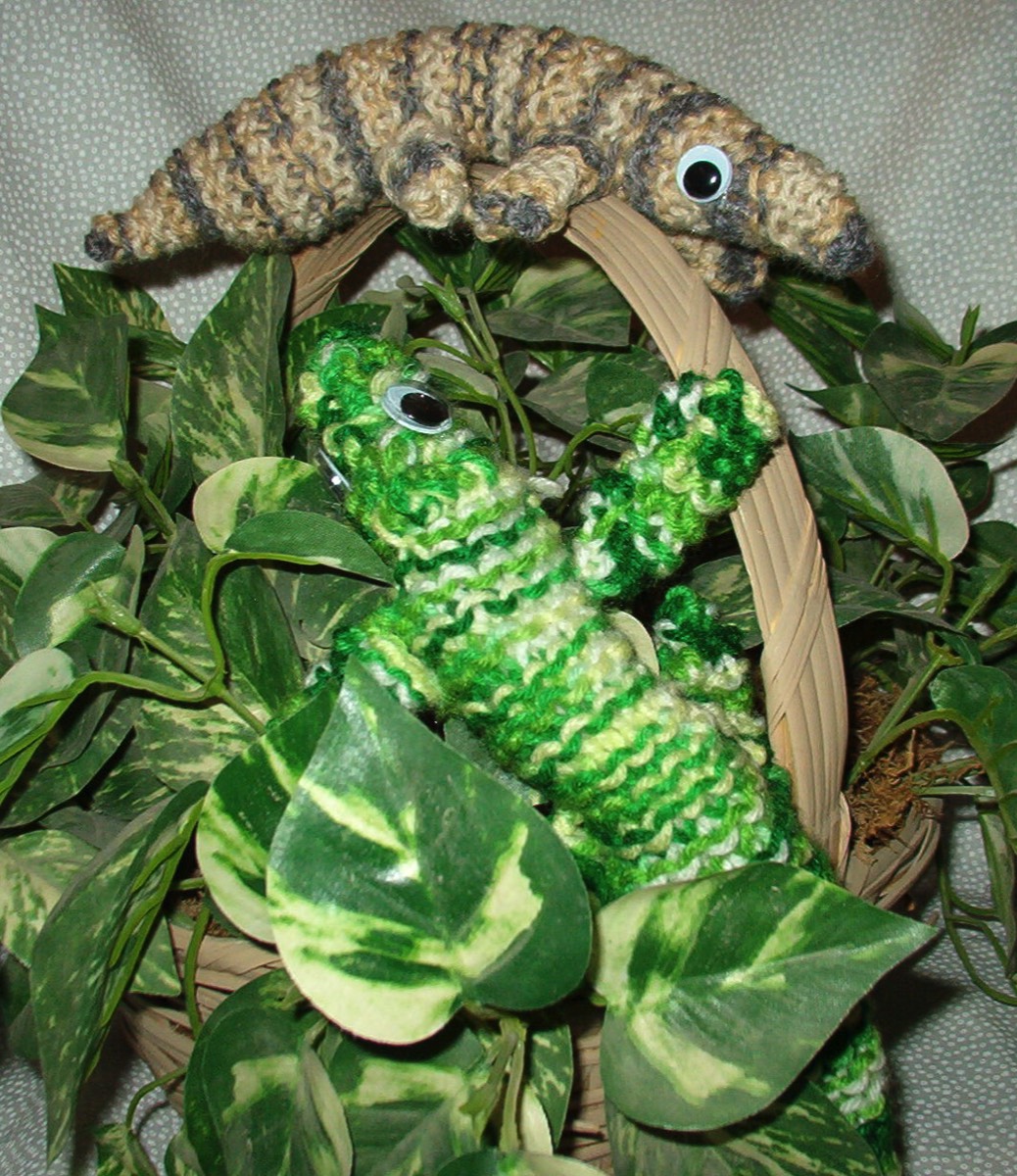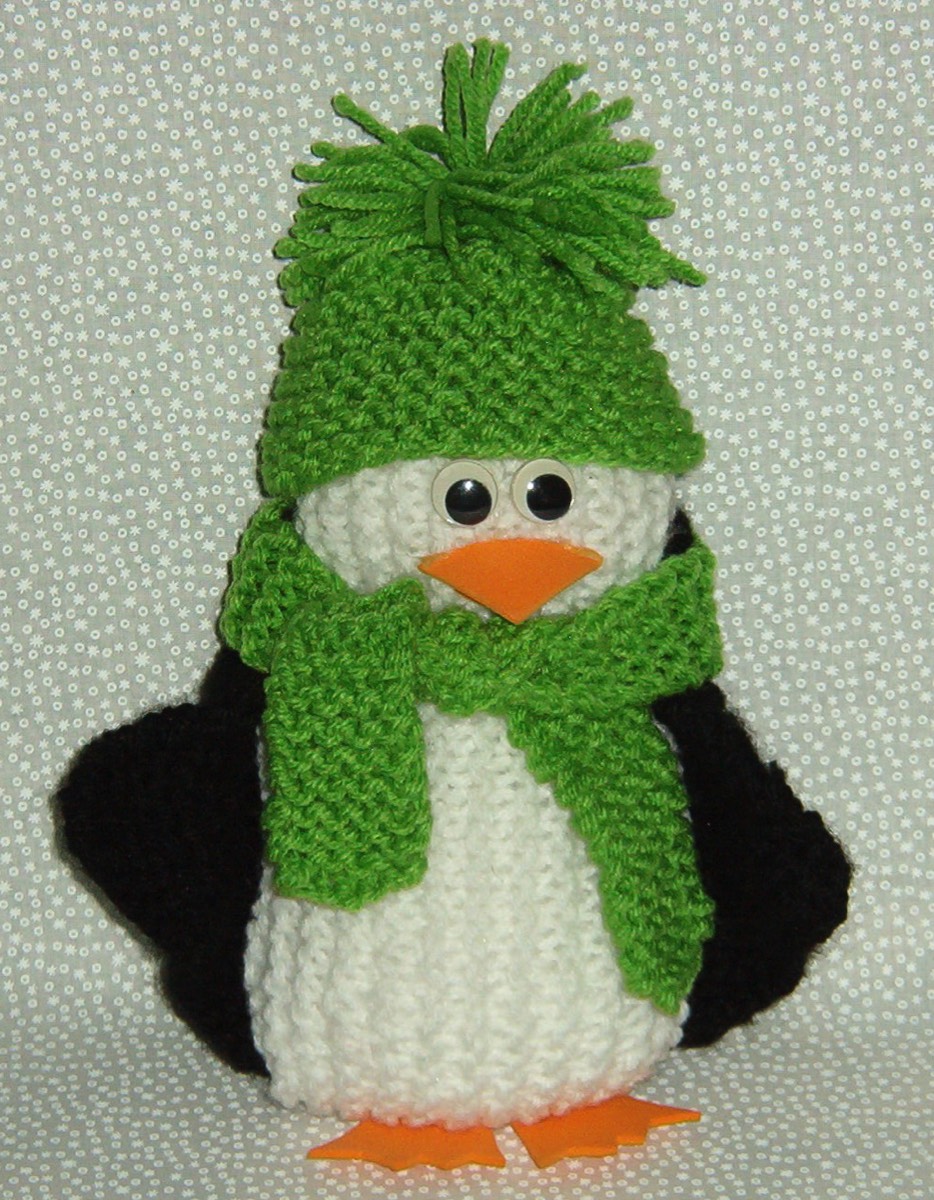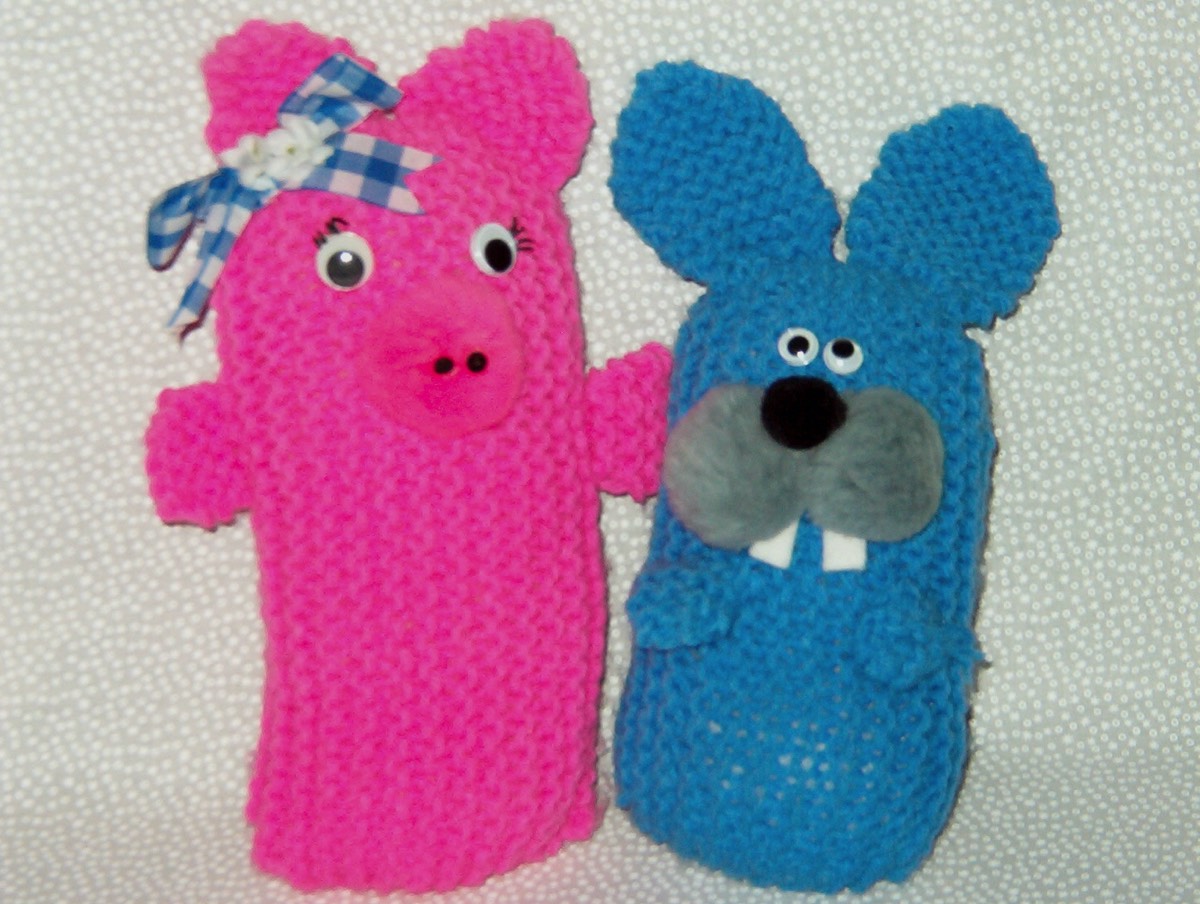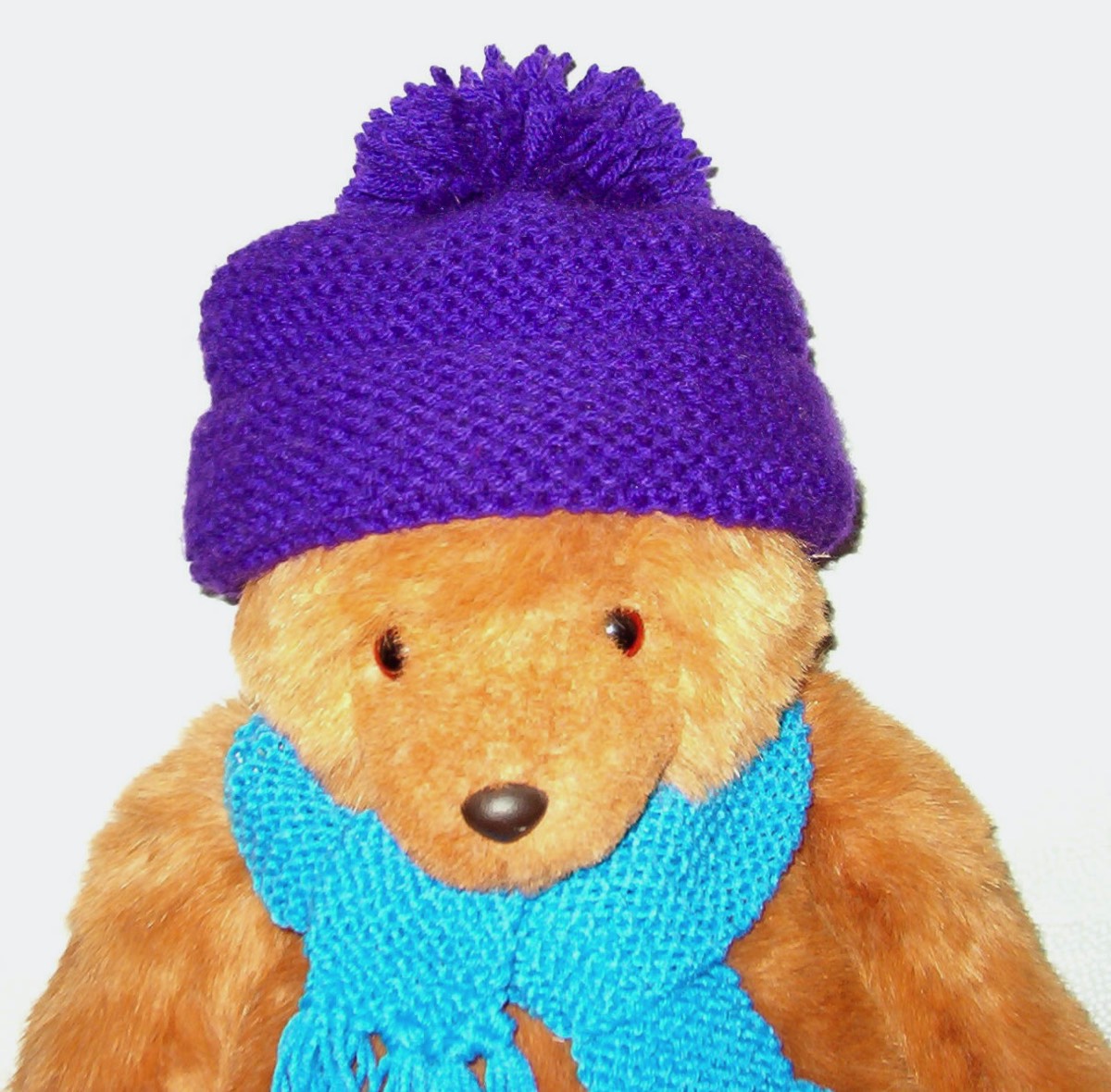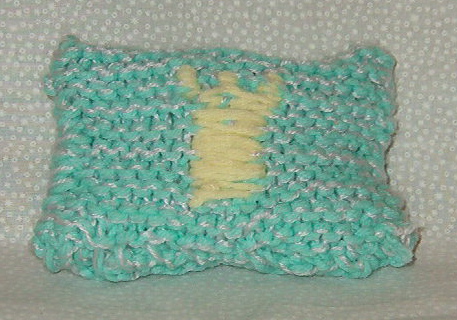Skills Needed: Cast On, Knit, Increase a Stitch, Decrease a Stitch, and Cast Off.
Materials:
Size 10.5 knitting needles, 5 ounces of worsted-weight yarn (I used variegated, or multicolored, yarn to make a striped pattern), safety pins, quilt batting for stuffing, wiggly eyes, material for a tongue, glue, and a sewing needle for use with yarn.
Directions: Head
Cast on 6 stitches. Knit 3 rows. (Knitting every row produces the garter stitch.)
Row 4: Increase 1 stitch in the first stitch. (Inc 1) Knit 1 stitch. (K1) Increase 1 stitch in the next 2 stitches. (Inc 1; Inc 1) Knit 1 stitch. (K1) Increase 1 stitch in the last stitch (Inc 1) You should have 10 stitches (sts.) at the end of the row.
Knit 3 rows of regular knitting.
Note: Here is how the directions will look with the abbreviations: Inc 1, K1, Inc 1, Inc 1, K1, Inc 1. I will be using the abbreviations from here to the end of the pattern.
Row 8: Inc 1, K2, Inc 1, K2, Inc 1, K2, Inc 1. (14 sts.)
Knit 3 rows.
Row 12: Inc 1, K3, Inc 1, K4, Inc 1, K3, Inc 1. (18 sts.)
Knit 3 rows.
Row 16: Inc 1, K4, Inc 1, K6, Inc 1, K4, Inc 1. (22 sts.)
Knit 3 rows.
Row 20: Inc 1, K5, Inc 1, K8, Inc 1, K5, Inc 1. (26 sts.)
Continue to knit every row in the garter stitch for about 40 inches. (You need to save a small amount of yarn for the tail and for sewing up the snake.)
Tail: Decrease 1 stitch (Dec 1) at the beginning and end of every other row, until you have 2 sts. left on the knitting needle. Knit the last 2 sts. together for the cast off. Leave a long tail of yarn to use to sew up the snake. You can also use smaller lengths of yarn for sewing, but remember to secure the ends so they do not come unraveled. Use a strip of quilt batting about 10 inches wide and the same length as the snake to stuff the snake, as you pin and sew the sides together. Roll the batting to fit inside the snake and stuff as you sew along the seam. You might need to trim the batting for the tail section. Hide the yarn ends by sewing them under a few stitches so they do not come undone.
Decorate your snake with wiggly eyes and a tongue. You can use buttons or other decorations, but remember not to give these items to young children who might pull them off and put them in their mouths.
Messmerland Knitting Pattern ©2006. Messmerland Knitting Patterns are free; not for commercial use.
